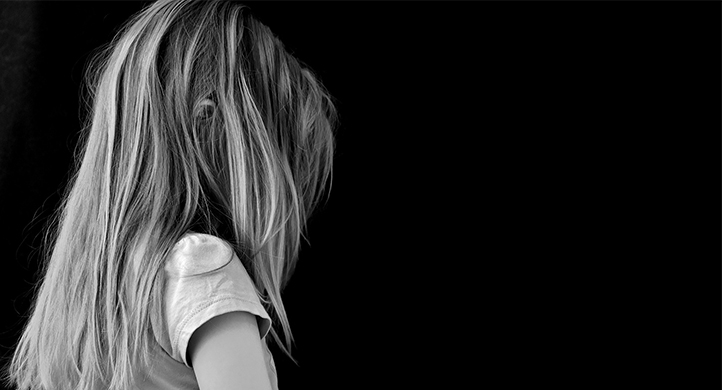Table of Content
Children, like adults, may experience emotional fluctuations. While it is normal for children to occasionally feel low or down, prolonged and intense sadness that disrupts daily activities may indicate childhood depression. This blog will delve into crucial aspects, exploring signs, causes, and effective interventions to foster a compassionate and informed approach toward mental well-being in young minds.
What is Childhood Depression?
Childhood depression is a mood disorder characterized by persistent feelings of sadness, hopelessness, and a loss of interest in activities. Recognizing and addressing depression in children is crucial for providing timely support and fostering emotional well-being.
What Causes Child Depression?
- Genetic Factors: Predisposition or family history of depression may lead to the onset of the disorder in children.
- Biochemical Factors: Imbalances in chemicals in the brain, like serotonin and dopamine, can affect a child's mood and may be connected to the development of depression in children.
- Environmental Factors: Adverse environments, including exposure to trauma, family conflict, abuse, or major life changes may trigger distress and contribute to depression.
- Psychological Factors: How a child handles feelings and copes with challenges or stressors may influence their likelihood of developing depression.
- Social Factors: Relationships with friends, social situations, or loneliness can impact a child's mental health. Bullying, rejection, or lack of support may contribute to depression.
- Physical Health Issues: Underlying physical health conditions like thyroid problems, chronic illnesses, neurological conditions, or physical health problems can impact a child's mental health, potentially leading to depression.
- Changes and Developmental Challenges: Transitions, such as moving, parental divorce, academic challenges, or changes associated with puberty, can be significant stressors for children, contributing to the development of depression.
Difference between Child and Adult Depression
Childhood and Adult depression present differently in the two groups in terms of their experience. Adults often experience classic sadness, apathy, and withdrawal. However, children may appear more irritable, cranky, angry, complain of physical ailments, or display isolative behavior.
Importance of Early Detection
Early detection of depression in children is crucial as it allows for timely intervention, preventing long-term impacts on mental health, academic performance, and social relationships. Identifying symptoms early enables effective treatment and support, improving the child's overall well-being and quality of life.
Early Signs of Depression in Children
Recognizing depression in children can be challenging; however, early signs are crucial. It is important to note that not every child exhibits all symptoms. Some may display only a few, while others may manifest many. The severity of the symptoms may also fluctuate among children and change over time.
Emotional Changes and Symptoms
- Persistent sadness: More than just occasional blues, this sadness lingers and feels heavy.
- Irritability and anger: Grumpiness, outbursts, and frustration become more frequent and intense.
- Loss of interest and enjoyment: Activities once loved spark little to no enthusiasm.
- Hopelessness and worthlessness: Negative self-talk, feeling like a burden, and believing things won't get better.
- Changes in appetite and sleep: Significant increase or decrease in both, leading to fatigue or restlessness.
Childhood Depression Symptoms
Childhood depression symptoms can vary widely, encompassing emotional, behavioral, and physical manifestations. These may include changes in appetite or sleep patterns, fatigue, difficulty concentrating, and recurrent thoughts of death or suicide.
Behavioral and Physical Signs
- Withdrawal from friends and activities: Social interaction becomes effortful, leading to isolation.
- Increased risk-taking or self-harm: Engaging in dangerous behaviors or harming oneself as a way to cope.
- Poor concentration and motivation: Difficulty focusing in school or completing tasks at home.
- Physical complaints without medical explanation: Frequent headaches, stomachaches, or fatigue with no underlying cause.
- Changes in hygiene and self-care: Neglecting personal appearance and responsibilities due to low energy or motivation.
Academic and Social Impacts
- Declining grades and academic performance: Difficulty focusing, completing assignments, and participating in class.
- Social isolation and conflict: Withdrawing from friends, social awkwardness, or increased arguments.
- Bullying and victimization: Increased vulnerability due to emotional state and social withdrawal.
- Refusal to attend school: Avoiding school due to anxiety, fear, or lack of motivation.
- Increased risk of substance abuse: Self-medicating with alcohol or drugs to numb emotional pain.
Child Depression Facts
Childhood depression, contrary to popular belief, is not merely a fleeting emotion but a legitimate mental health concern demanding attention. Statistics reveal that around 3% of children aged 6-12 and 6% of teenagers grapple with depression.
- Without treatment, a major depressive episode usually lasts for about eight months.
- Children with dysthymic disorder, a milder but chronic form of depression, may experience longer depressive episodes that can develop into major depression over time.
- Longer episodes are also linked to other mental health problems, parental depression, and conflicts between parents and children.
- Major depression can lead to suicide attempts and completion, which are severe outcomes.
- Since 1950, the number of teenagers attempting suicide has increased fourfold, which matches the rise in major depressive disorder.
Risk Factors of Childhood Depression
Various risk factors can influence childhood depression. Genetic predisposition plays a significant role, with children having a family history of depression being more susceptible. Adverse childhood experiences such as trauma, abuse, or neglect can also increase the risk. Additionally, environmental factors like stress, family conflict, and socioeconomic disadvantage contribute to vulnerability. In the case of childhood depression, the most frequent comorbid diagnoses are dysthymia (a milder but chronic and insidious form of depression) and anxiety disorders (both at 30% to 80%), disruptive disorders (10% to 80%), and substance use disorders (20% to 30%). Other comorbid diagnoses include conduct disorder, social phobia, and general anxiety disorder.
Treatment Options for Childhood Depression
Treatment for childhood depression often involves various therapeutic approaches tailored to the individual's needs.
Professional Therapy and Counseling
- Cognitive Behavioral Therapy (CBT): CBT focuses on identifying and challenging negative thought patterns and behaviors that contribute to depression. It teaches coping skills and strategies to manage symptoms, promoting healthier ways of thinking and responding to stressors.
- Interpersonal Psychotherapy (IPT): IPT targets interpersonal issues and relationships that may contribute to depression. It helps children develop better communication skills, address conflicts, and build stronger social support networks, thereby alleviating depressive symptoms.
- Dialectical Behavior Therapy (DBT): DBT combines cognitive-behavioral techniques with mindfulness practices to help children regulate emotions, tolerate distress, and improve interpersonal relationships. It teaches skills for managing intense emotions and coping with challenging situations effectively.
Medications
Medication plays a vital role in treating childhood depression, especially in moderate to severe cases or when other interventions are inadequate.
- Selective Serotonin Reuptake Inhibitors (SSRIs) are commonly prescribed as first-line medication for childhood depression. SSRIs increase serotonin levels in the brain, alleviating depressive symptoms. Examples include fluoxetine (Prozac), sertraline (Zoloft), and fluvoxamine (Luvox).
- Serotonin and Norepinephrine Reuptake Inhibitors (SNRIs), such as venlafaxine (Effexor), are also used to target both serotonin and norepinephrine neurotransmitters.
- Atypical antidepressants like bupropion (Wellbutrin) or mirtazapine (Remeron) may be considered when SSRIs or SNRIs are ineffective or not well-tolerated.
Close monitoring by a qualified healthcare provider is essential to assess effectiveness, monitor for side effects, and adjust the treatment plan as needed. Medication is often combined with therapy for a comprehensive approach to managing childhood depression.
Alternative Treatments and Therapies
Alternative treatments and therapies offer valuable options for managing childhood depression, complementing traditional approaches.
- Lifestyle and holistic approaches, including regular exercise, balanced sleep and nutritious meals boost mood and resilience, promoting overall well-being.
- Techniques like meditation and yoga teach children to manage stress, calm their minds, and cultivate inner peace.
- Support groups and peer support provide children with opportunities to connect with others who may be experiencing similar challenges, fostering a sense of belonging, understanding and empathy.
Supporting a Child with Depression
Supporting a child with depression involves providing unconditional love, and listening without judgment. Notice changes in mood, sleep, appetite, or activity level. If concerns linger, seek professional help for accurate diagnosis and treatment.
Communication Strategies and Emotional Support
When supporting a child with depression, effective communication strategies and emotional support are essential. Encourage open dialogue, validate their feelings, and offer reassurance. Listen actively, without judgment, and provide empathy and understanding. Help them express their emotions and thoughts, and offer praise and encouragement for their efforts. Create a safe and supportive environment where they feel comfortable sharing their struggles. Additionally, be patient, compassionate, and consistent in your support, and encourage them to seek professional help when needed.
When to Seek Professional Help
Seek professional help if you notice persistent signs of depression in your child, such as lasting sadness, changes in behavior or mood, withdrawal from activities or relationships, difficulty concentrating, or thoughts of self-harm. Additionally, if your child's symptoms interfere with daily functioning, academic performance, or social interactions, or if you have concerns about their well-being, it's important to consult a qualified mental health professional for assessment and guidance. Early intervention can make a significant difference in managing childhood depression.
Role of Parents and Caregivers
Parents and caregivers play a crucial role in supporting a child with depression.
- Family Therapy: Addresses the child's depression by improving communication, and resolving conflicts. It provides a platform for understanding and supporting each other's needs, fostering stronger familial bonds and resilience.
- Education and Awareness: Educating oneself about childhood depression and raising awareness within the family helps destigmatize the condition and promotes empathy and understanding.
- Creating a Supportive Environment: Involves fostering open communication, offering emotional support, and minimizing stressors. Establishing routines, setting realistic expectations, and celebrating achievements contribute to the child's well-being.
- Active Involvement in Treatment: Includes attending therapy sessions, following medication regimens, and implementing strategies learned in therapy at home. Collaborating with mental health professionals ensures continuity of care and optimizes treatment outcomes for the child.
Get therapy and counseling for Childhood Depression at Cadabams Hospitals
At Cadabams Hospitals, we offer specialized therapy, counseling, and medication management services tailored to children coping with depression. Our compassionate team of mental health professionals provides evidence-based interventions, including cognitive-behavioral therapy, interpersonal therapy, and family therapy, to address each child's unique needs. By focusing on creating a supportive and nurturing environment, we empower children and their families to navigate the challenges of depression and build resilience for a brighter future.
Get the support your child needs at Cadabams Hospitals!
FAQ
What is major depression in children?
Major depression in children involves persistent feelings of sadness, hopelessness, or irritability that interfere with daily life. Symptoms may include changes in appetite or sleep, loss of interest in activities, and thoughts of self-harm.
At what age is depression most common?
Depression can occur at any age, but it's most commonly diagnosed during adolescence, typically around ages 15 to 18. However, it can also affect children as young as preschool age.
Who is most at risk of depression?
Several factors contribute to the risk of depression, including genetics, family history, trauma, chronic illness, and environmental stressors. Adolescents, females, and individuals with a family history of depression or comorbidities are at higher risk.
How Cadabam's Help you for Addiction?
- 410+ Professional Consultants
- 1,00,00+ Happy Faces
- 120+ Currently Seeking Treatments









